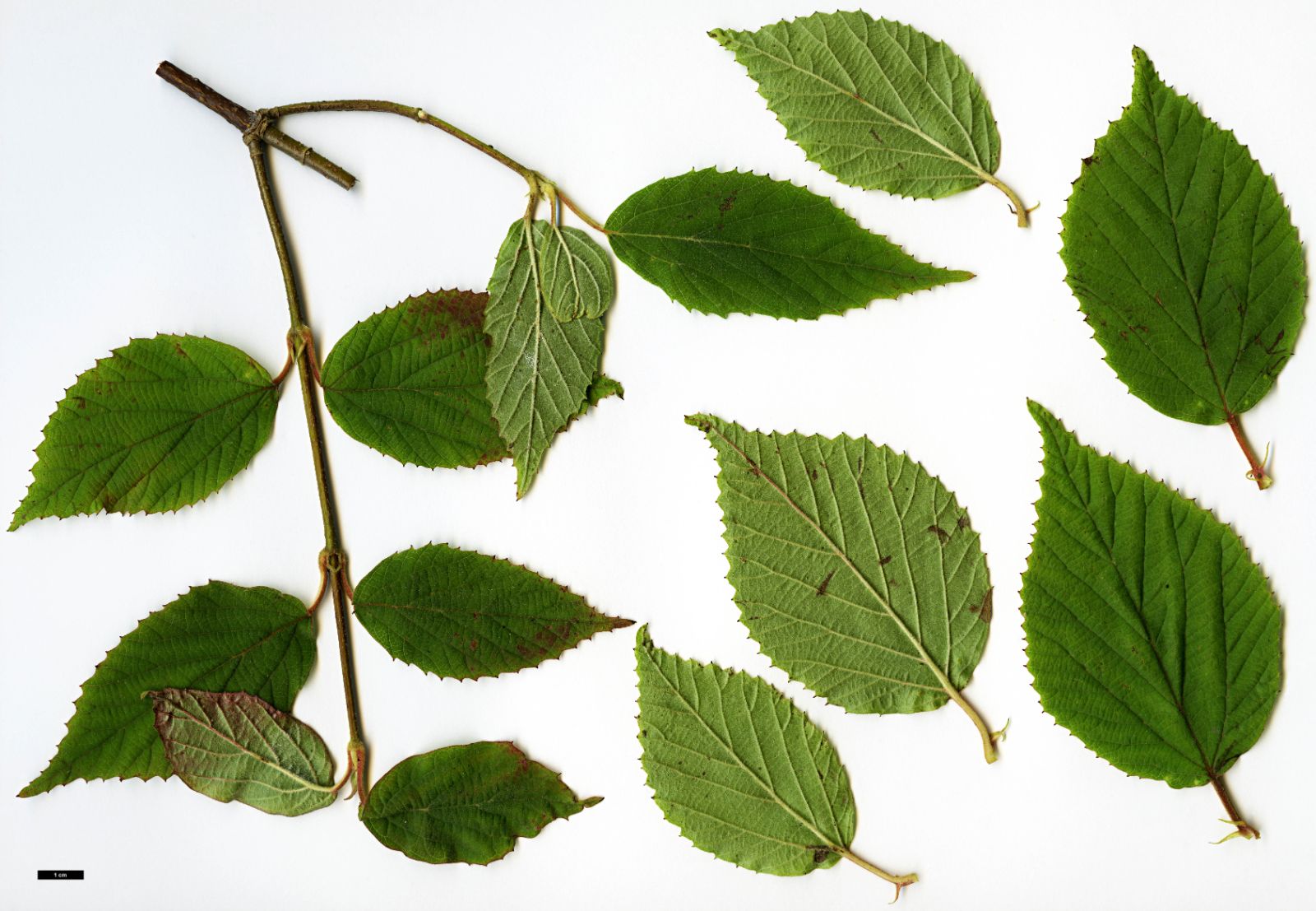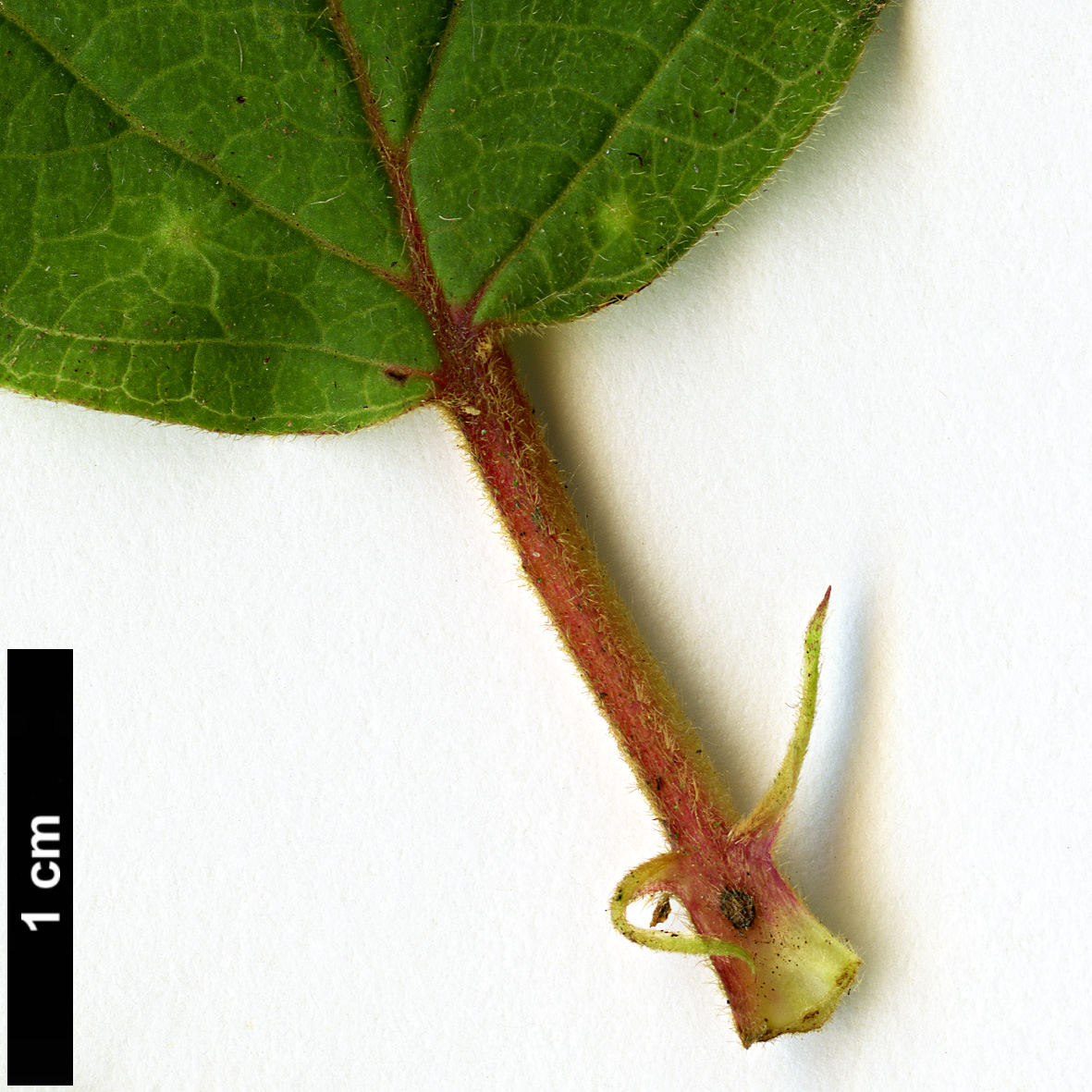Viburnum hupehense
Credits
Article from Bean's Trees and Shrubs Hardy in the British Isles
Recommended citation
'Viburnum hupehense' from the website Trees and Shrubs Online (treesandshrubsonline.
Genus
Other taxa in genus
- Viburnum acerifolium
- Viburnum betulifolium
- Viburnum × bodnantense
- Viburnum buddleifolium
- Viburnum burejaeticum
- Viburnum × burkwoodii
- Viburnum × carlcephalum
- Viburnum carlesii
- Viburnum cassinoides
- Viburnum cotinifolium
- Viburnum cylindricum
- Viburnum davidii
- Viburnum dentatum
- Viburnum dilatatum
- Viburnum erosum
- Viburnum farreri
- Viburnum foetidum
- Viburnum grandiflorum
- Viburnum harryanum
- Viburnum henryi
- Viburnum japonicum
- Viburnum kansuense
- Viburnum lantana
- Viburnum lantanoides
- Viburnum lentago
- Viburnum macrocephalum
- Viburnum molle
- Viburnum nudum
- Viburnum odoratissimum
- Viburnum opulus
- Viburnum phlebotrichum
- Viburnum plicatum
- Viburnum propinquum
- Viburnum prunifolium
- Viburnum rhytidophyllum
- Viburnum rigidum
- Viburnum rufidulum
- Viburnum schensianum
- Viburnum setigerum
- Viburnum sieboldii
- Viburnum suspensum
- Viburnum tinus
- Viburnum utile
- Viburnum veitchii
- Viburnum wilsonii
- Viburnum wrightii
A deciduous shrub, the young shoots stellately hairy the first year, purplish brown the second. Leaves broad-elliptic or roundish ovate, long-pointed, truncate or slightly heart-shaped at the base, coarsely toothed, dark green and covered with loose stellate down above, paler and more downy beneath, 2 to 3 in. long, 11⁄4 to 21⁄4 in. wide, veins in six to eight pairs; leaf-stalk grooved, 1⁄2 to 3⁄4 in. long, densely downy; stipules narrowly lanceolate, downy. Corymbs about 2 in. wide, the main and secondary flower-stalks covered densely with stellate down; branches of the corymb usually five. Fruits egg-shaped, red, 1⁄3 to 2⁄5 in. long. Bot. Mag., n.s., t. 41.
Native of Hupeh and Szechwan, China; discovered by Henry; introduced by Wilson in 1908. It is nearly related to V. dilatatum (from which it differs in its orbicular-ovate leaves, and stipuled leaf-stalks), and to V. betulifolium, from which it is distinct in being downy on both leaf surfaces. As a fruiting shrub it is scarcely inferior to either. Award of Merit 1952.




